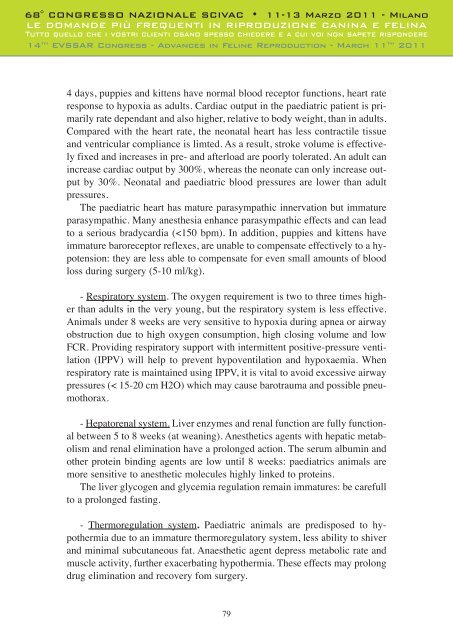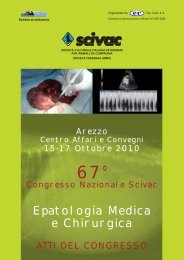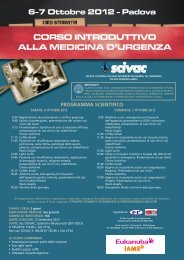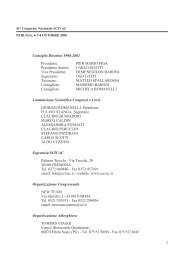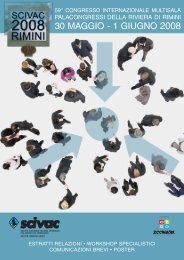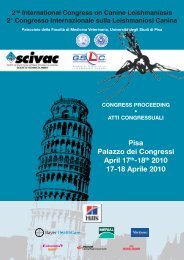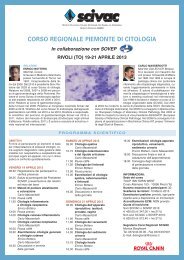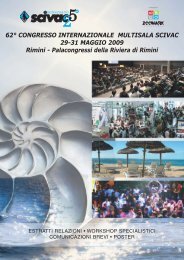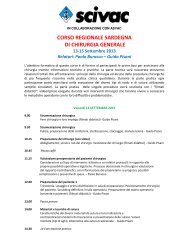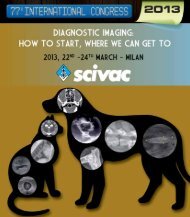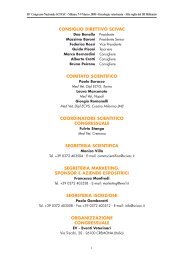68° Congresso Nazionale SCIVAC: Le domande più frequenti in ...
68° Congresso Nazionale SCIVAC: Le domande più frequenti in ...
68° Congresso Nazionale SCIVAC: Le domande più frequenti in ...
You also want an ePaper? Increase the reach of your titles
YUMPU automatically turns print PDFs into web optimized ePapers that Google loves.
<strong>68°</strong> CONGRESSO NAZIONALE <strong>SCIVAC</strong> 11-13 Marzo 2011 - Milano<br />
LE DOMANDE PIÙ FREQUENTI IN RIPRODUZIONE CANINA E FELINA<br />
Tutto quello che i vostri clienti osano spesso chiedere e a cui voi non sapete rispondere<br />
14 th EVSSAR Congress - Advances <strong>in</strong> Fel<strong>in</strong>e Reproduction - March 11 th 2011<br />
4 days, puppies and kittens have normal blood receptor functions, heart rate<br />
response to hypoxia as adults. Cardiac output <strong>in</strong> the paediatric patient is primarily<br />
rate dependant and also higher, relative to body weight, than <strong>in</strong> adults.<br />
Compared with the heart rate, the neonatal heart has less contractile tissue<br />
and ventricular compliance is limted. As a result, stroke volume is effectively<br />
fixed and <strong>in</strong>creases <strong>in</strong> pre- and afterload are poorly tolerated. An adult can<br />
<strong>in</strong>crease cardiac output by 300%, whereas the neonate can only <strong>in</strong>crease output<br />
by 30%. Neonatal and paediatric blood pressures are lower than adult<br />
pressures.<br />
The paediatric heart has mature parasympathic <strong>in</strong>nervation but immature<br />
parasympathic. Many anesthesia enhance parasympathic effects and can lead<br />
to a serious bradycardia (


